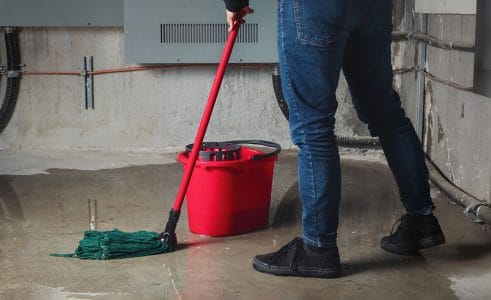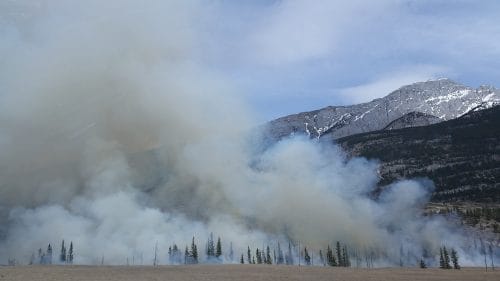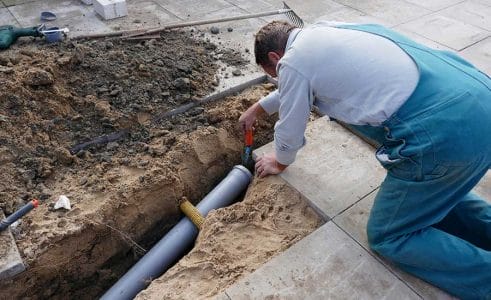Hail and Wind Safety
Hail damage is a significant risk to property across the US. Every year, thousands of Americans experience damage to their cars, roofs, windows, and gutters as a result of hail storms.
This can be expensive to repair, so it’s important to know the signs of a hail storm, how to minimize damage to your property, and what insurance coverage you need.
Signs Of A Hail Storm
How does hail form?
Hail storms occur as a result of severe thunderstorms. Hail forms when the strong updrafts in thunderstorms send falling precipitation back towards the top of storm clouds, where temperatures are below freezing.
Drops of precipitation freeze, forming small hailstones, which continue to grow as they rise and fall with the storm drafts. Hail finally falls to the ground when the winds can no longer support the weight of the hailstones.
When and where do hail storms occur?
Hail storms are more likely to occur in the spring and summer months, when temperatures and humidity soar, creating ideal conditions for thunderstorms and, therefore, hail.
Severe hail storms can occur across the country, but they are most common in what’s known as “hail alley,” which includes Nebraska, Colorado, and Wyoming. Oklahoma, Illinois, and Kansas are also known as hail states.
There’s no guaranteed way to tell whether a thunderstorm will produce hail, but some indications are heavy rain, strong winds, changes in wind direction, and sudden drops in temperature.
Radar can detect hail, so paying attention to weather forecasts and alerts during severe thunderstorms can provide you with some warning about possible hail.
Hail Storm Insurance
Wind and hail losses are the most common type of property damage claim filed by homeowners. In 2017, there were 6,045 major hail storms in the US, which resulted in $1.8 billion worth of damage to property and crops.
Fortunately, damage to your property as a result of hail and wind during a storm should be covered by your homeowner’s insurance.
Most homeowner’s insurance policies include coverage for the following:
- Wind and hail damage
- Water and ice damage
- Lightning strikes
- Power surges
- Fallen trees
Even if you think your property is covered for hail damage, it’s important to check the fine print of your insurance policy and talk through any concerns you may have with your provider. Costs of hail damage can run up to $13,000, so consider that when choosing a policy.
Keep your insurance details somewhere accessible and consider storing another set off-site in case the originals are lost or damaged. Contact details for your insurer should be kept with details of your policy. Consider taking ‘before’ photos of your property so that, in the event of storm damage, you have a record of its original condition for your insurance provider.
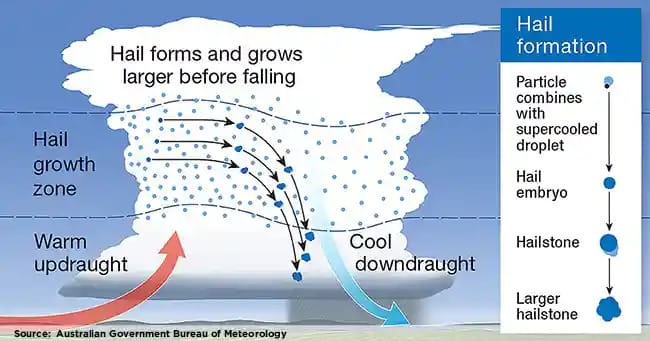
Hail Storm Insurance
Wind and hail losses are the most common type of property damage claim filed by homeowners. In 2017, there were 6,045 major hail storms in the US, which resulted in $1.8 billion worth of damage to property and crops. Fortunately, damage to your property as a result of hail and wind during a storm should be covered by your homeowner’s insurance.
Most homeowner’s insurance policies include coverage for the following:
- Wind and hail damage
- Water and ice damage
- Lightning strikes
- Power surges
- Fallen trees
Even if you think your property is covered for hail damage, it’s important to check the fine print of your insurance policy and talk through any concerns you may have with your provider. Costs of hail damage can run up to $13,000, so consider that when choosing a policy.
Keep your insurance details somewhere accessible and consider storing another set off-site in case the originals are lost or damaged. Contact details for your insurer should be kept with details of your policy. Consider taking ‘before’ photos of your property so that, in the event of storm damage, you have a record of its original condition for your insurance provider.
Protecting Your Property
Roof
Roof damage is the most common result of a hail storm, and hail damage repair costs can be high. Even small jobs where just a few shingles have been damaged can run to around $650. Protecting yourself now can help you save money in the long run.
Damage to roofs from hail is caused by the impact of hailstones hitting the shingles. Generally speaking, hail starts causing shingle damage when the stones are 1 inch in diameter, or “quarter-size.” In storms where the hailstones are large – 4.5 inches in diameter and above – shingles can crack, and hail may even fall into your roof cavity (the space between your external roof and your ceiling). Smaller hailstones, however, can still cause major problems.
As hailstones hit the shingles, they loosen the bond between the shingles and the asphalt layer of your roof. This will eventually lead to shingles falling from your roof, leaving your house exposed, and potentially damaging other parts of your property. The gaps left by fallen shingles will also expose your home to leaks.
If hail accumulates on your roof and is unable to melt away down drain pipes, it risks seeping through your roof, causing water damage. To prevent this from occurring, ensure your gutters and downspouts are kept clear. You can find helpful information on how to keep your gutters clean in our gutter cleaning guide.
Roofing material and shape can have a significant impact on the amount of damage hail can cause. Solid roof decking and impact-resistant roof coverings will help reduce the risk of hail damage. When looking at materials for your roof, if you live in a hail prone region, try to stick to a UL 2218 class 3 or 4 impact resistance. Introducing a slope to your roof can also help lessen hail damage. Roofs with steep slopes don’t see as much damage because they don’t sustain as much direct impact from falling hailstones.
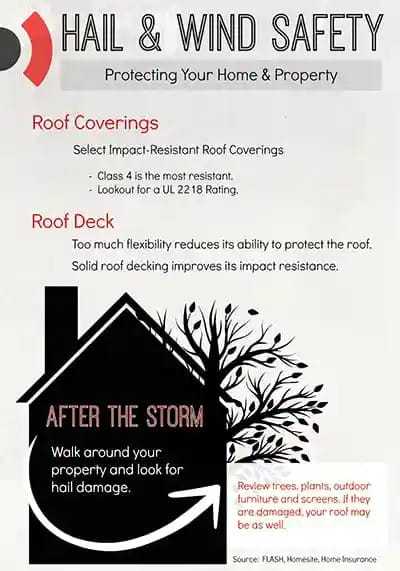
Windows
Windows are a weak point in any property during any severe weather because the glass can be fragile. Hail storms are no exception. Four major forms of damage may be caused to windows by a hail storm:
- Shattered glass
- Cracked glazing
- Torn screens
- Dented frames
Even if your window does not shatter, any of these other signs of damage indicate that your window has been weakened, and you may need to get it replaced.
To try and prevent window damage from hail, invest in some storm shutters. These cost around $7 per square foot and take around 15 minutes to install. If you do not have storm shutters, soft protective coverings, such as blinds, curtains, and blankets, can be used to reduce the risk of harm and additional damage inside.
Gutters
Hailstones can cause serious damage to gutters. Depending on their size, hailstones can crack or break through gutters entirely. In addition to cracks and holes, hail can clog gutters, either as ice as it falls or by causing particles of grit to fall from the shingles into the gutters. As hail lands on shingles, its impact causes grains of grit to break away from the shingles. Over time, or in a particularly heavy storm, these small grains can build up and cause blockages in your drain pipes.
Hail damage to gutters can result in water damage to your home’s exterior because of heavy rainwater running through holes in your gutters. Additionally, water can leak into your home itself due to blocked gutters.
Prevent this damage by investing in guards and filters for your gutters that will keep grit out of your gutter system and offer protection to the piping.
Staying Safe During A Hail Storm
Hail is not only a danger to your property but to you as well. With the size and speed of hail and wind during storms, being hit by hailstones can cause serious injury.
- To avoid injury, find shelter as soon as possible. Finding protection outdoors can be tricky, as the usual shelters that offer cover, such as trees, are dangerous due to lightning and high winds, which often accompany the storms.
- Inside, stay away from windows in case of shattered glass. If possible, remain on the first floor with blinds and curtains closed, where there is less chance of injury from hail breaking through your roof.
- Buildings with limited glass and multiple floors are best for shelter during hail storms. These will allow you to stay away from hail that may break through roof cavities or windows.
- If the power goes out during the storm, shut your electricity off. When the power comes back on, surges are likely to cause damage to utilities.
- Do not use candles to light your home because they could be knocked over or come into contact with flammable materials. Have a supply of flashlights and batteries instead.
- Have a mobile phone and radio in your home so you can stay connected and informed.
The Aftermath
Thunderstorms: Once a hail storm has subsided, wait an hour or so before going outside to examine any damage. It is likely that the weather will still be dangerous, with high winds and lightning, so it may not be safe as soon as the hail subsides.
Tornadoes: Conditions that create hail are also those which can lead to tornadoes, so try and keep an eye on local weather warning system to see how the storm develops.
Flash flooding: After the storm that caused the hail has passed, check how much ice is on the ground in your area. Thick carpets of hail are often left after storms, and the quick rate at which it melts can cause flash flooding.
If you think you are at risk of flash flooding, try to move yourself and your family upstairs. If you have time, consider taking valuables (that can be moved) and insurance documents with you.
There are warning systems in place for flooding, which aim to give two days’ notice of when flooding may occur. Flood watches and warnings are both issued by the National Weather Service.
How To Repair Hail Damage
Wind and hail damage repairs to a house can be costly, usually ranging anywhere between $2342 and $12,934. The first thing to do once you have established the damage caused to your property is to contact your insurance company and ask them to assess the loss. Be sure to have your policy number on hand so they can guide you through the best course of action based on your coverage.
Trying to repair the damage yourself may leave your property more vulnerable, especially if you’ve sustained roof damage. The bonds holding your shingles and windows in place must be of high, consistent quality to be able to withstand future hail storms and other weather events.
Consider contacting a property restoration service who will be able to repair any damage and offer advice for protecting your property in the future.
.jpg)
